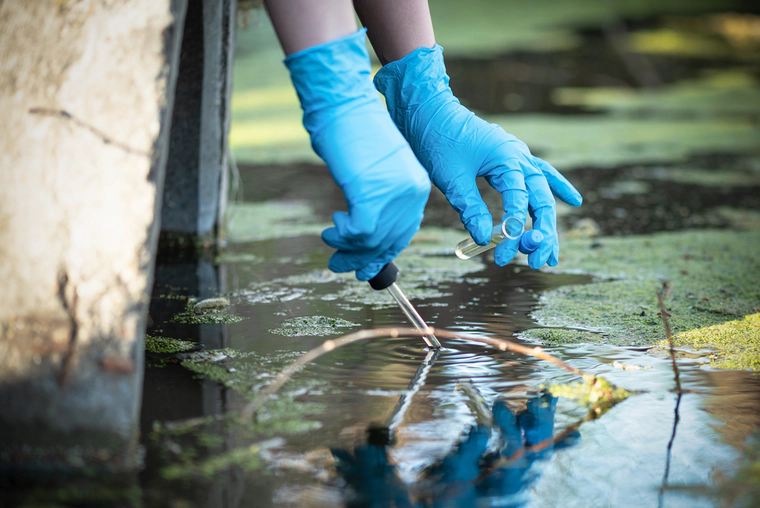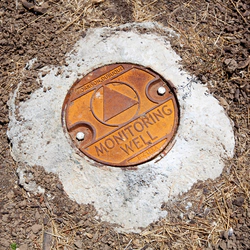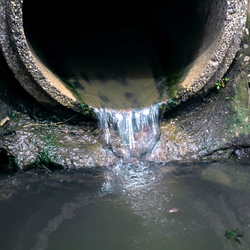It’s in the Water, Opioid Use so Widespread that Tests Now Detect Trace Opioids in Water Supply
The increasing presence of trace levels of opioids in the water supply set the stage for serious debates over health and safety, bodily autonomy, and the rights of nature.

As the opioid epidemic spread across the United States throughout the first two decades of the 21st century and wreaked havoc on the lives of Americans in every state, a new side effect of the epidemic is now rising to national attention. In recent testing projects across the U.S., trace opioid chemicals have been found in the water supply.
Three Recent Instances of Opioid Contamination in the Water
A cursory Google search will reveal news reports and discussions about opioid chemicals contaminating the water. The following are three of the most well-known, thoroughly reported, and concerning stories.
Opioids Detected in Puget Sound:

Perhaps the most concerning story is out of Washington State, where multiple research programs have detected trace levels of opioids in mussels in Washington’s Puget Sound. While opioids don’t seem to affect the mussels, research shows that opioids affect fish that eat mussels. And humans eat fish. This provides us with a first look at the looming domino effect of what could happen if a bottom-of-the-food-chain life form becomes contaminated with opioids. Eventually, the effect of opioids on those lower ecosystems will almost certainly work its way up to humans.1

Opioids Detected in California Groundwater:
A study published in Science of the Total Environment found a range of pharmaceutical compounds in California’s groundwater. The researchers found trace chemicals of caffeine, carbamazepine (a mood stabilizer), codeine (an opioid analgesic), p-xanthine (a caffeine metabolite), sulfamethoxazole (an antibiotic), and trimethoprim (an antibiotic). Further, though it is not a pharmaceutical drug, it’s worth mentioning that the researchers also detected trace elements of pesticides in the groundwater.2

Opioids Detected in a North Carolina Municipality:
According to another set of research on the other side of the country, concentrations of nine different opioids were collected from wastewater sites in one North Carolina municipality. Not only is this concerning, considering the risk factors of such opioid chemicals eventually filtering their way back into the groundwater, but it’s also indicative of the degree of opioid consumption the local population was engaged in. Quoting lead researcher Dr. Peter R. Chai, “Our data show that there are varying concentrations of opioids throughout the area we studied. Instead of providing comprehensive data for the suburban area, we were able to help public health officials think about where there are greater levels of opioid use in specific parts of the assessed region.” While it’s true that wastewater is meticulously processed, it’s still quite concerning that researchers found such a wide range of opioids in just one area.3
The Implications for Human Rights and the Rights of Nature
When the Clean Water Act became part of federal law in 1972, its charter was to be the “…principle law governing pollution control and water quality of the Nation’s waterways.” The Act did not mention the nation’s water supply as it relates to pharmaceutical drugs, as the widespread use of mind-altering pharmaceutical opioids was not yet a common feature of American society.4
Today, the mass spread of opioid painkillers into American society, to the extent that opioids are now in the water supply, poses unique challenges beyond the obvious physical problem of water contamination. Article 25 of the Universal Declaration of Human Rights states: “Everyone has the right to a standard of living adequate for the health and well-being of himself and of his family, including food, clothing, housing and medical care and necessary social services, and the right to security in the event of unemployment, sickness, disability, widowhood, old age or other lack of livelihood in circumstances beyond his control.” For the millions of Americans who decide that their approach to “…the right to a standard of living adequate for the health and well-being of himself and of his family…” does not include opioid chemicals in their bodies, the contamination of opioids introduced into the water supply could be described as a human rights violation.5
The rights of Americans to live happy, healthy, self-directed lives free of opioid contamination are not the only rights on the line. Though the U.S. Constitution does not currently recognize the rights of nature, precedents are being set for this. For example, in 2021, Ecuador’s High Court affirmed constitutional protections for nature, spurred forth by the Ecuadoran rainforests that faced ecosystem collapse due to over-logging and other resource extraction. Looking to the future, Americans may see the devastation of ecosystems in their own country as a violation of the rights of nature and demand similar protections.6
If the U.S. does adopt Constitutional protections for nature, then the rights of fish, mussels, and other marine life (that coincidentally serve as the basic food chain for thousands of mammal species, humans included), will be violated if such marine life continues to be exposed to opioid chemicals.
Looking to the Future
The United States must draw back from its deep, nationwide reliance on opioid drugs as an alleged problem solver. Given the drugs’ addictive nature, questionable benefits, and unnecessary costs in finance and quality of life, Americans need to seek alternatives to opioids to avoid addiction risk and keep our water clean.
And for those who are addicted to opioids, they must be helped through qualified drug addiction treatment centers. As long as millions of Americans are hooked on opioids, there will always be a demand for such drugs. The nation is not getting out of this mess until those who are addicted receive help. We need to make sure treatment is made available to the millions of addicted Americans, not just for them but for the future of our water, our bodily autonomy, and the health of our wildlife.
Sources:
-
PSI. “Bay Mussels in Puget Sound Show Traces of Oxycodone.” Puget Sound Institute, 2018. pugetsoundinstitute.org ↩︎
-
STE. “Occurrence and concentrations of pharmaceutical compounds in groundwater used for public drinking-water supply in California.” Science of Total Environment, 2011. waterboards.ca ↩︎
-
NIDA. “Human Opioid Exposure Can Be Measured Using Wastewater.” National Institute of Drug Abuse, 2021. nida.nih.gov ↩︎
-
BOEM. “Clean Water Act (CWA).” Bureau of Ocean Energy Management, 2022. boem.gov ↩︎
-
UN. “Universal Declaration of Human Rights.” United Nations, 2022. un.org ↩︎
-
ICN. “Ecuador’s High Court Affirms Constitutional Protections for the Rights of Nature in a Landmark Decision.” Inside Climate News, 2021. insideclimatenews.org ↩︎







 ®
®